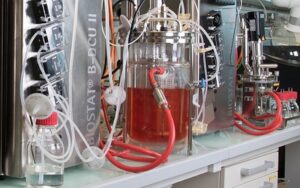Molecular assay design is a cornerstone of modern biological and clinical research, enabling scientists to detect, quantify, and analyze specific biomolecules such as DNA, RNA, proteins, and metabolites. These assays are critical for a wide range of applications, from diagnosing diseases to studying gene expression and identifying pathogens. The design of molecular assays requires a deep understanding of molecular biology, chemistry, and the specific application requirements. This article explores the principles, methodologies, and challenges involved in molecular assay design, as well as its significance in advancing research and diagnostics.
The Foundations of Molecular Assay Design
Molecular assays are designed to detect and measure specific molecular targets within a complex biological sample. These targets can be nucleic acids, proteins, or small molecules, and the assay must be tailored to accurately identify and quantify these entities. The fundamental principle of molecular assay design revolves around specificity, sensitivity, and reproducibility.
– Specificity: The assay must selectively target the molecule of interest without cross-reacting with other similar molecules. This is achieved through the careful selection of probes, primers, or antibodies that bind exclusively to the target molecule.
– Sensitivity: The assay must detect even low concentrations of the target molecule. This is particularly important in clinical diagnostics, where early detection of a disease marker can significantly impact patient outcomes.
– Reproducibility: The assay must produce consistent results across different samples and experimental conditions. This ensures that the data generated is reliable and can be replicated in other laboratories.
Types of Molecular Assays
There are several types of molecular assays, each designed for specific applications and target molecules. Some of the most commonly used assays include:
1. Polymerase Chain Reaction (PCR)
PCR is one of the most widely used molecular assays, particularly for the amplification and detection of DNA and RNA sequences. It involves the use of specific primers that flank the target sequence, allowing for its exponential amplification. Variants of PCR, such as quantitative PCR (qPCR) and reverse transcription PCR (RT-PCR), enable the quantification of nucleic acids and the detection of RNA, respectively.
2. Enzyme-Linked Immunosorbent Assay (ELISA)
ELISA is a powerful technique for detecting and quantifying proteins, such as antibodies, antigens, and cytokines. The assay relies on the binding of specific antibodies to the target protein, followed by a colorimetric or luminescent readout that indicates the presence and quantity of the protein.
3. Next-Generation Sequencing (NGS)
NGS technologies have revolutionized molecular biology by allowing the high-throughput sequencing of entire genomes, transcriptomes, or specific regions of interest. NGS-based assays are used for a wide range of applications, including genetic testing, pathogen detection, and cancer genomics.
4. Mass Spectrometry (MS)
Mass spectrometry is a versatile technique for analyzing small molecules, metabolites, and peptides. It involves ionizing the target molecules and measuring their mass-to-charge ratio, providing detailed information about the molecular composition and structure.
Key Considerations in Molecular Assay Design
Designing a molecular assay requires careful consideration of several factors to ensure optimal performance and reliability. These include:
1. Target Selection
The first step in molecular assay design is selecting the appropriate target molecule. This decision is guided by the research or clinical question being addressed. For example, in infectious disease diagnostics, the target may be a specific region of the pathogen’s genome, while in cancer research, it may be a particular gene mutation or expression profile
2. Probe and Primer Design
Probes and primers are critical components of many molecular assays, such as PCR and ELISA. They must be designed to bind specifically to the target molecule with high affinity. Computational tools are often used to design and optimize these sequences, ensuring that they are specific, stable, and efficient.
3. Assay Format
The format of the assay—whether it is a plate-based ELISA, a real-time PCR assay, or a sequencing platform—must be chosen based on the target molecule, sample type, and desired sensitivity. The format also influences the throughput, with some assays allowing for high-throughput screening of thousands of samples, while others are more suited to individual tests.
4. Controls and Standards
Incorporating appropriate controls and standards is essential for validating the performance of a molecular assay. These include positive controls (known quantities of the target), negative controls (samples without the target), and internal standards (to account for variability in sample processing). Controls help ensure that the assay is functioning correctly and that the results are accurate.
Challenges and Future Directions
While molecular assay design has advanced significantly, several challenges remain. One of the primary challenges is the need for assays that are both highly specific and sensitive, particularly for low-abundance targets in complex biological samples. Additionally, the development of assays that are robust across diverse sample types and conditions is critical for their widespread adoption.
Emerging technologies, such as CRISPR-based diagnostics and microfluidic platforms, are poised to address some of these challenges by offering enhanced specificity, sensitivity, and automation. These innovations are likely to drive the next generation of molecular assays, enabling even more precise and efficient detection of biomolecules.
Conclusion
Molecular assay design is a vital tool in the arsenal of modern biological and clinical research. By enabling the precise detection and quantification of specific biomolecules, these assays play a crucial role in advancing our understanding of biology and improving diagnostic capabilities. As technology continues to evolve, molecular assays will become even more powerful, paving the way for new discoveries and innovations in science and medicine.





